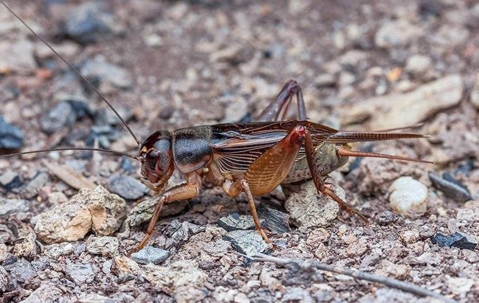What To Know About Crickets
Like bees are known for their stinging, crickets are known for their signature "singing." Male crickets rub their legs together to create a distinct chirping noise, which they use to attract potential mates. The sound can add a pleasant ambiance to the evening, but it can also be an annoying reminder of pests running amok indoors.
Common house crickets in the U.S. can be identified by their yellowish coloration paired with a triple-banded pattern appearing on the back of their heads. These bugs can measure between 3/4 and 7/8 of an inch in length and are equipped with powerful hind legs that make them nimble jumpers.
Most of us think of crickets as top hat-wearing animated characters singing about wishing upon stars or as an exotic "dare" food to try dipped in chocolate or dusted with spices. The surprising truth is that these pests aren’t easy to get along with and can pose a number of problems around your Oklahoma City property.
How Dangerous Are Crickets?
Crickets cause just about every problem that a pest can. First and foremost, crickets can contaminate surfaces with their droppings. Exposure to cricket droppings can result in the transmission of salmonella and E. coli bacteria and even parasitic worms. Worse, contact with cricket feces can cause painful sores to develop on the skin. While these sores aren’t life-threatening, they are an annoying and bizarre consequence of a cricket infestation.
Once indoors, crickets are known to survive indefinitely. This is because they can get all the nutrition they need from munching on cloth and fabric around the home. Upholstered furniture, clothing, curtains, carpeting, and blankets are all on the menu for hungry crickets. Damage from feeding crickets can ruin your belongings.
And although they aren’t usually known to draw blood, crickets will absolutely bite if handled. They aren’t determined to bite like mosquitoes, but crickets will use their jaws in self-defense, inflicting pain and possibly spreading disease.
How To Get Rid Of Crickets
There are a few common reasons why crickets may be attracted to your property. Excess moisture and humidity draw a variety of pests to your property, and crickets are no exception. Crickets love light, and strong outdoor lighting at night can cause them to congregate. Overgrown bushes, grass, and vegetation can give crickets the outdoor cover they need to thrive.
With a few simple adjustments, you can prevent crickets from infesting your property. Here’s how:
- Control moisture. Prevent moisture from accumulating around your property by clearing gutters and directing all draining water away from your home or business. Ventilate basement areas by opening windows if possible, or try installing a dehumidifier.
- Reduce light. Turn off outdoor lights at night to stop crickets from gathering. You can switch to yellow bulbs or sodium-vapor lamps, which are less appealing to crickets.
- Do yard work. Clean up your yard by mowing the lawn regularly, trimming back overgrown hedges, and getting rid of any organic debris like leaf piles or rotting logs. Keep firewood stored at least 20 feet away from any buildings.
For advice and assistance with crickets in Oklahoma City, be sure to contact the professionals at Guaranteed Pest Service of Oklahoma. Since 1991, we’ve been providing exceptional service to local homes and businesses. If you have pest problems of any size, you can trust our trained technicians to take care of it. Get in touch with us today.
Request Your Free Estimate
Complete the form below to schedule your no-obligation estimate.

